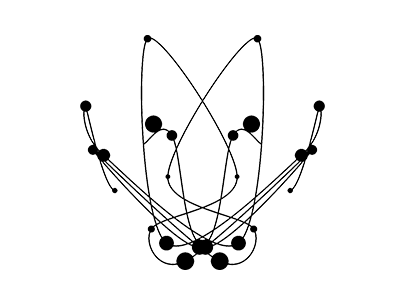Interview with Monique Smit
The Meaning Behind Kids’ Scribbles
Special Mention 2023
When parents receive their children’s scribbles from school, they typically either lock them away in a memory box or put them on the fridge. But do we ever closely examine our children’s artwork or even earnestly ask them about their drawings? In many cases, when adults look at a child’s scribbles, they only see unorganized lines. However, children look at the same drawing and see a whole picture. The Meaning Behind Kids’ Scribbles brings awareness to the importance of children’s art.
Created in collaboration with an elementary school, these symbols represent the drawings of forty-five school children aged from 2 to 5. Teachers, who were instructed not to tell children what to draw, asked students to first create a picture, and then explain their artwork. The resulting scribbles were traced, named after the children’s explanations, and digitized into the visuals of The Meaning Behind Kids’ Scribbles.
This project’s aim is twofold. Firstly, it hopes to encourage parents and teachers to ask children about their scribbles. Because while it might seem like the lines don’t represent anything, young children often practice fortuitous realism: meaning although a child may not set out to create a specific image, after they’ve finished a drawing, they project meaning onto certain shapes, likening them to resembling a car or a house. This can both promote bonding between adults and children as well allow adults to have fun by using their own imagination to find a picture in their children’s scribbles. Secondly, The Meaning Behind Kids’ Scribbles urges designers and non-designers alike to forgo their rigid view of the world and get creative by searching for meaning in the places where they think there is none.
Monique Smit
Monique Smit is a first-year student and mom of two completing a bachelor’s degree in Graphic Design at Greenside Design Center in Cape Town, South Africa. Smit has a special interest in UX design because of its emphasis on detail, and also enjoys creating one line illustrations. While she has traditionally been a perfectionist when it comes to design, The Meaning Behind Kids’ Scribbles has taught her that sometimes, imperfect pieces are the ones that turn into the greatest artworks.
Process




